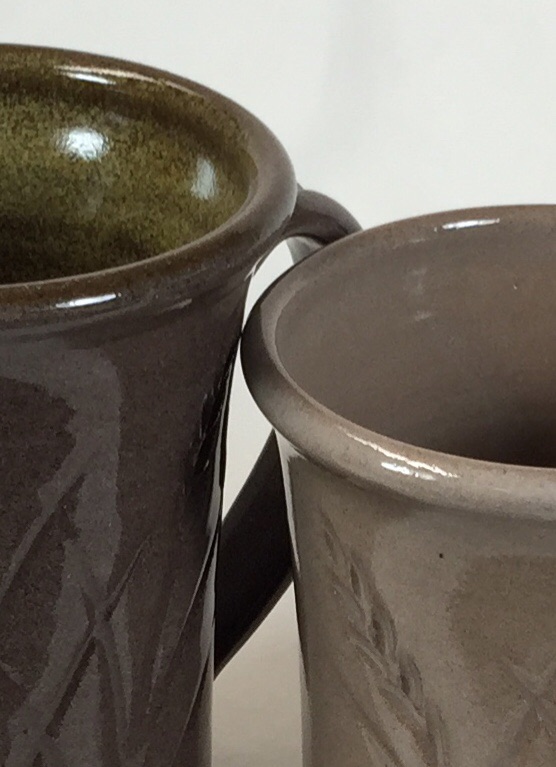Our G2926B glaze may not work on dark burning clays
These two glazes, applied to the outsides of these mugs, both fire as brilliant glass-like super-transparents. But on this high-iron stoneware, from which both pieces are made, only one is working well. G3806C (on the outside of the piece on the left) melts more, it is fluid and much more runny. This melt fluidity gives it the capacity to pass the micro-bubbles generated as the body gases during firing. G2926B (right) works great on porcelain and buff stoneware but it cannot clear the clouds of bubbles coming out of this body (the bubbles are actually partially opacifying it). Even the normal glassy smooth surface has been affected. The moral: Potters need more than one insight-live.com/glossary/262">base transparent recipe. Being able to host colors, opacifiers and variegators is nice, but sometimes just a transparent that works well is needed. An interesting trade-off of reactive melt-fluid glazes is that, while they develop more interesting surfaces, their lower SiO2 and Al2O3 contents make them susceptible to crazing, settling of the slurry and cutlery marking.
Pages that reference this post in the Digitalfire Reference Library:
G3806C - Cone 6 Clear Fluid-Melt transparent glaze, G2926B - Cone 6 Whiteware/Porcelain transparent glaze, An ultra-clear brilliantly-glossy cone 6 clear base glaze? Yes!, Transparent glazes often work poorly on dark stoneware bodies, Clouding in Ceramic Glazes

This post is one of thousands found in the Digitalfire Reference Database. Most are part of a timeline maintained by Tony Hansen. You can search that timeline on the home page of digitalfire.com.
